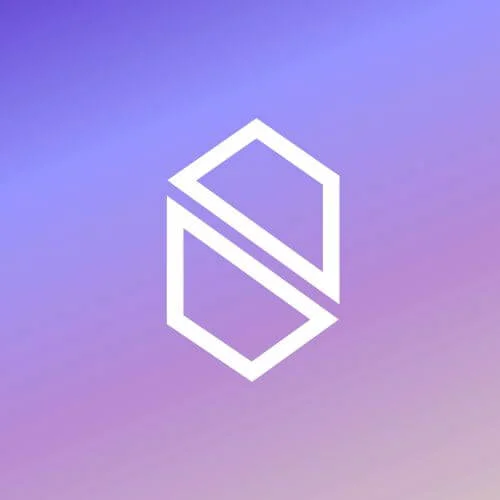Of all the charts and metrics I track, few have shot off the screen with the kind of vertical, almost violent, energy as ChainOpera AI ($COAI). You’ve probably seen the headlines: a Fully Diluted Valuation screaming past $4 billion, a price surge of over 500% in a single day, and trading volumes that briefly rivaled giants like Solana and BNB. It’s the kind of explosive debut that sends crypto Twitter into a frenzy and has analysts scrambling for explanations.
The easy story to tell here is one of perfect timing. A savvy project riding the dual tidal waves of an AI gold rush and a roaring "BNB Season." And yes, that’s part of it. But if you stop there, if you only look at the ticker on CoinMarketCap, you’re missing the real breakthrough. You're watching the lightning strike and completely ignoring the fundamental change in atmospheric physics that made it possible.
Because when I dig into the data behind ChainOpera AI, I don’t just see a hot token. I see the faint, flickering outline of a new kind of digital economy. A model that attempts to solve one of the most profound imbalances of the internet age: the disconnect between the people who create value and the people who capture it. This isn't just another crypto project; it's a fascinating, high-stakes experiment in what happens when users become owners.
From Users to Stakeholders: A Quiet Revolution
Let’s get past the noise for a moment. The core of the ChainOpera AI ecosystem is its suite of AI tools—an AI Agent network, a developer platform, a chat interface. It’s a full-stack infrastructure. In simpler terms, it’s a toolbox and a playground for building and interacting with specialized AI. Before its token ($COAI) ever launched, it was a functioning product. And it attracted people. Over 3 million of them.
Here’s where the story pivots. Of those 3 million users, 300,000 were actively using BNB to pay for services. They weren't speculators; they were customers. And then the token generation event happened. Out of that pool of active, paying users, an estimated 40,000 of them converted into $COAI holders.
When I first saw that statistic, I honestly just sat back in my chair, speechless. Forget the price charts. This is the number that matters. In a Web3 world plagued by projects where the token holders have never even touched the product, this is a radical inversion. This is a project that built a community of users first, and then invited them to become owners. It’s a direct funnel from product engagement to network ownership. Can you feel the paradigm shift in that? We're talking about a move away from the extractive model of Web2—where our data and attention are the products—to a collaborative model where our participation grants us a stake in the outcome.

This is the kind of breakthrough that reminds me why I got into this field in the first place. It’s a glimpse of an internet where the platforms we build and rely on are also owned and governed by us, the people who breathe life into them. What does a social network look like when its users are its shareholders? What does an AI ecosystem look like when the people training the models also benefit from their success? These are the questions COAI forces us to ask.
Riding the Perfect Wave, or Making It?
Of course, the critics have a point. The timing for ChainOpera AI was, to put it mildly, impeccable. The launch coincided with a massive surge in perpetual futures trading on the BNB chain, a simultaneous listing with another hyped project that created a traffic feedback loop, and a macro crypto bull run lifting all ships—it was a perfect storm of market conditions that created this incredible updraft of liquidity and attention, and the speed of it all is just staggering. The Secret Behind ChainOpera AI’s Explosive Success: Strategic Cycle Timing and a Fully Diluted Valuation Beyond $4 Billion
I’ve seen the skeptical takes. One user on X warned that with over 96% of the token supply held in the top 10 wallets, this wasn't a real pump but "pure manipulation." And that concern over token concentration is absolutely valid. Centralization of power, even in a decentralized system, is a risk we have to confront head-on. It’s our primary responsibility as builders and participants in this new world. What Are The Risks of Buying ChainOpera AI (COAI) in October?
But I want to reframe that fear. What if we’re not just seeing manipulation, but the birth of a new kind of capital formation? Think about the early days of the printing press. It was a technology that promised to democratize information, but for the first decades, the presses themselves were owned by a tiny handful of wealthy patrons and guilds. The potential was there, but the distribution of power took time to catch up.
The critical question for ChainOpera AI isn't about the current wallet distribution. It’s about the team’s vision and the project’s governance over time. Are those concentrated holdings the war chest for a decade of ecosystem development, or are they a ticking time bomb? Will the project use its momentum to progressively decentralize and empower its 40,000+ new user-owners? The technology provides the opportunity, but human choices will determine the outcome.
Beyond the Hype, a New Architecture
So, what is ChainOpera AI? Is it a brilliantly timed, high-risk trade? Or is it the prototype for a more equitable digital future? Right now, it’s both. The market is treating it as the former, a volatile asset to be traded on hype cycles. But I urge you to look deeper, past the daily charts and into the architecture of its community. The real innovation here isn’t just the AI; it’s the economic link it forged between its product and its people. That model—turning users into owners—is a blueprint. It’s a powerful, replicable idea that could change how we build everything online. The token’s price will fluctuate, but the power of that idea is here to stay.










